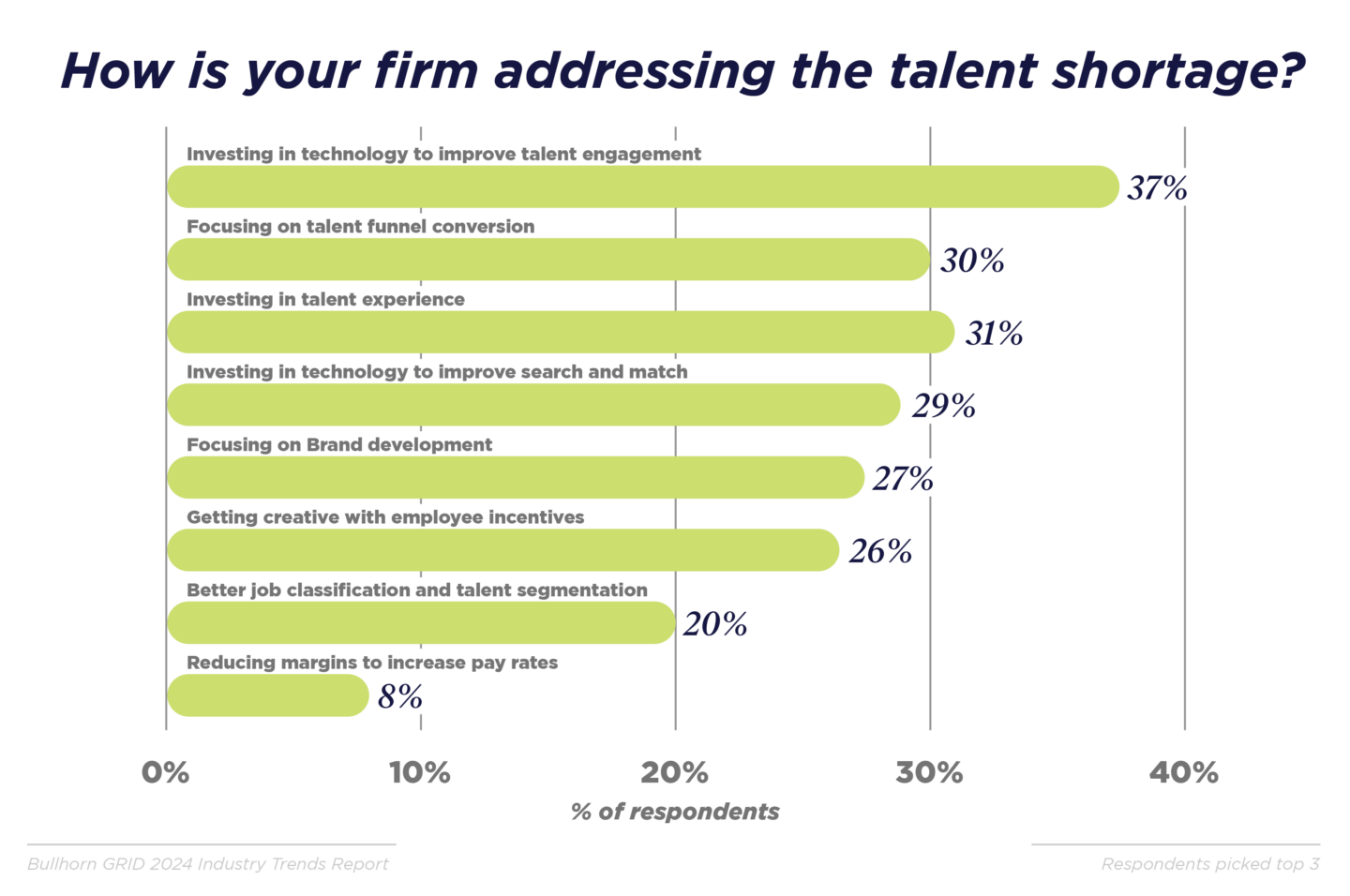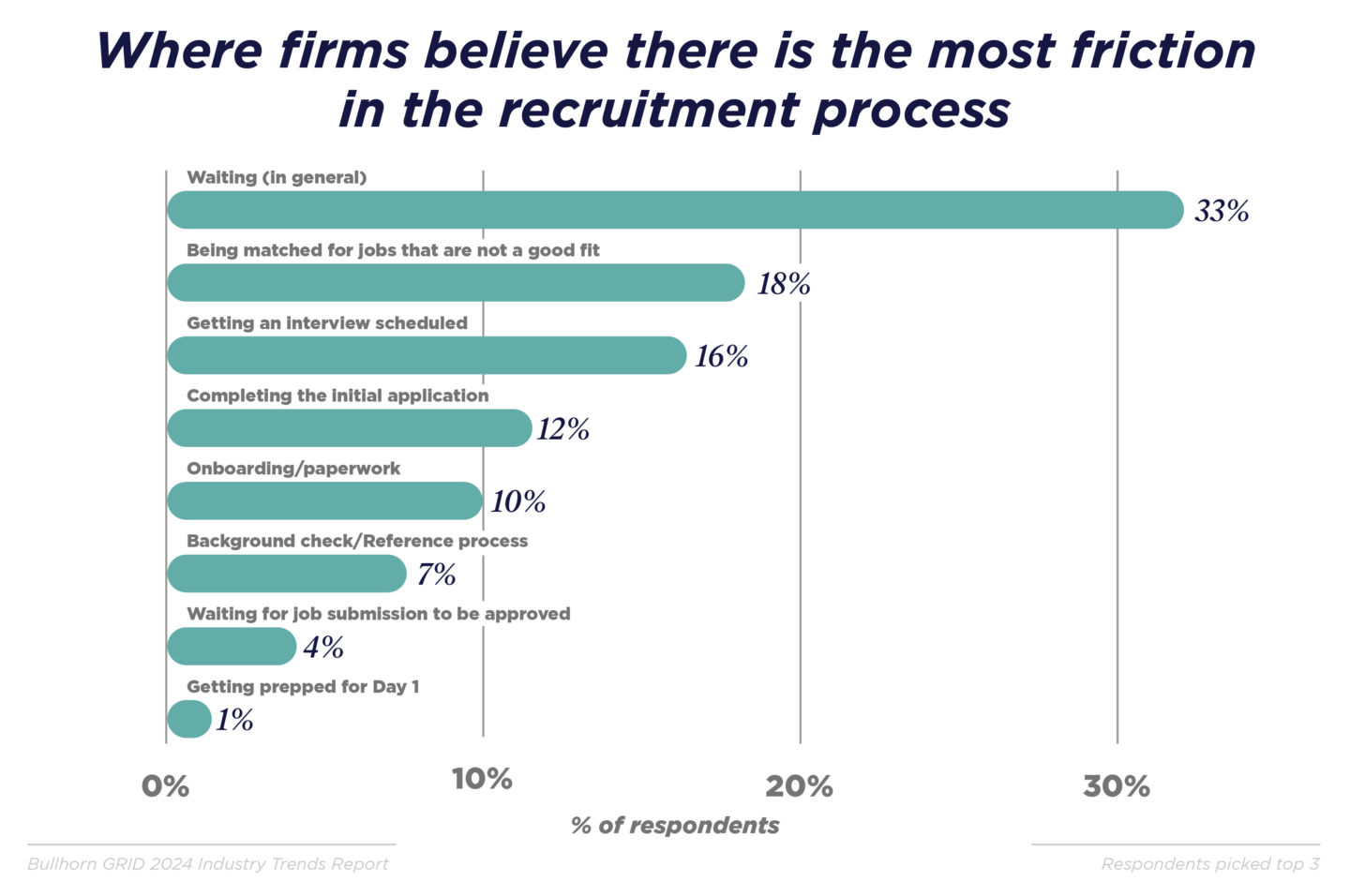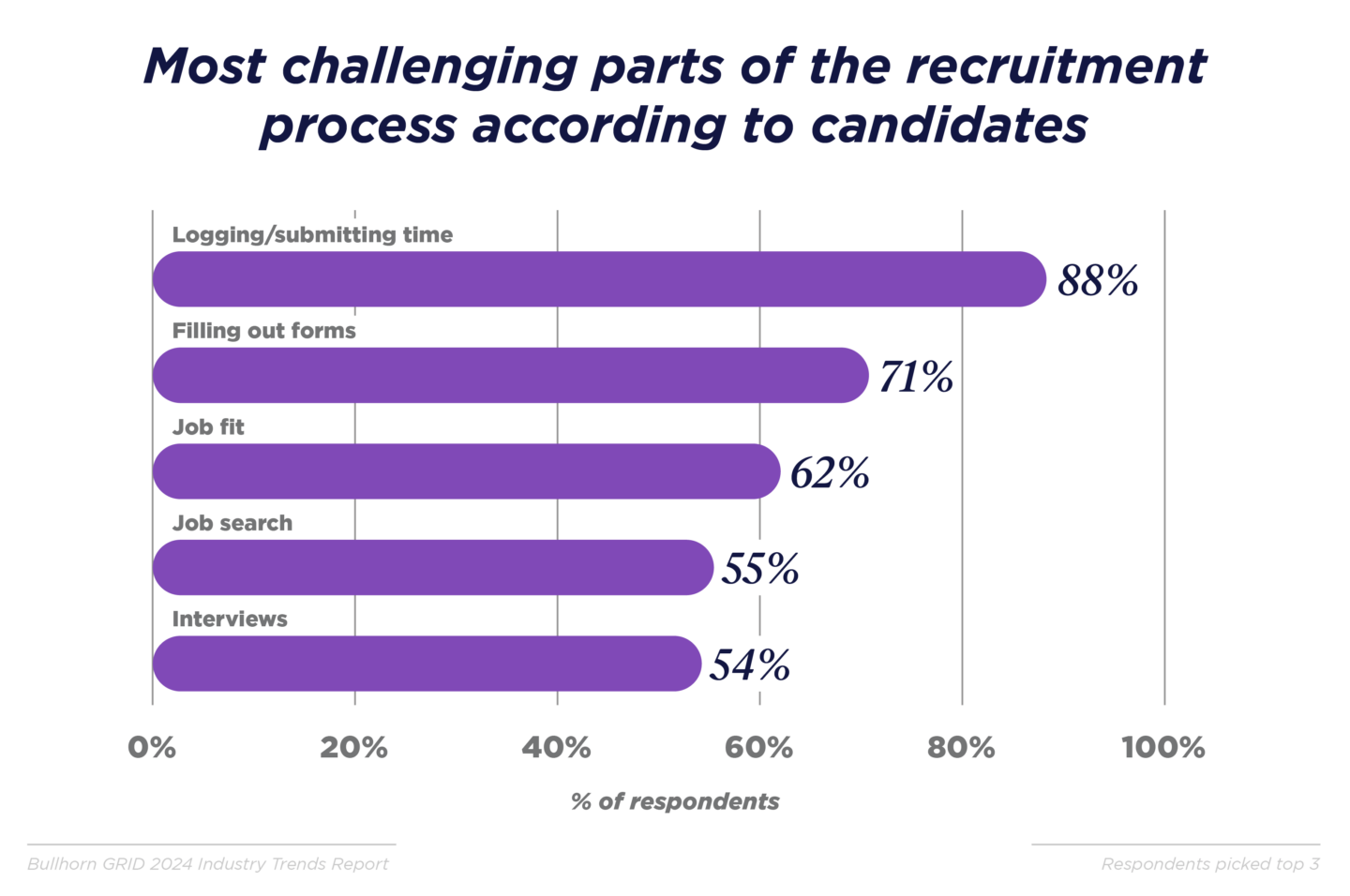Financially successful firms are thoughtfully investing in talent engagement
When asked what strategies they are employing to address the ongoing talent shortage, firms were most likely to indicate they are investing in technology to improve talent engagement. And the GRID 2024 Industry Trends Report found that there is a significant correlation between these investments and revenue growth.
Talent still wants more communication than firms are giving
One key part of talent engagement is proactively communicating with candidates. Firms could stand to reach out to candidates a little more frequently, especially since it has such a strong impact on candidate loyalty. Given that 43% of firms still cite talent shortage as a top challenge facing the staffing industry, they cannot afford to lose any top candidates from their database.
Certain candidates still want faster placement times
A crucial part of talent engagement is placing candidates as quickly as possible. Comparing what candidates want to what firms deliver, firms are doing all right, but there is room for improvement. Candidates’ expectations seem to be increasing, especially as self-service gig platforms are on the rise.
72% of candidates want to be placed in one month or less, and 84% of firms say they are meeting that goal. In fact, 59% of firms say they are placing candidates in less than 20 days on average.
Paperwork is still a big pain for candidates
When we look more closely at each stage of the recruitment lifecycle, there are some areas for improvement.
Interestingly, 30% of staffing firms say talent engagement is the most challenging part of the recruitment process. The exact same percentage of candidates say they gave up working with a recruiter because they did not reach out or communicate frequently enough. So, both sides know they need to connect more consistently, but firms may lack the resources and tools to keep up with candidate expectations. AI might be the silver bullet for this issue, with automated workflows prompting the outreach and AI generating tailored, omnichannel communications that keep talent engaged and happy.
One-third of staffing firms say waiting causes the most friction for talent — that roughly correlates with the 32% of candidates who say they stopped working with a firm because the process was taking too long. With continued competition for qualified talent, moving talent through the funnel as quickly as possible will not only lead to financial gains but also candidate loyalty. Automation remains the best tool for improving talent funnel conversion and enhancing the candidate experience.
Individual verticals also had specific pain points. Commercial staffing firms were 57% more likely to cite background checks as the stage with the most friction for talent, whereas healthcare firms were 70% more likely to say onboarding and paperwork are the biggest issues for their candidates.
When candidates were asked a similar question — Which parts of the recruitment process were the most challenging? — their responses overlapped with those of the firms but had some key differences.
Firms seem to be underestimating how big a pain point the interview process represents for candidates. 54% list interviews as one of the most challenging parts of the recruitment process — 60% in healthcare. Only 10% of firms feel paperwork and onboarding are a point of friction, but filling out forms was actually the top choice for candidates when it comes to the most challenging part of the recruitment process.
27% of candidates said the process of filling out paperwork was still mostly manual, a bottleneck that can easily be addressed with automation. And 80% of healthcare candidates felt submitting time was a top pain point, another opportunity for automation to substantially enhance the candidate experience.







